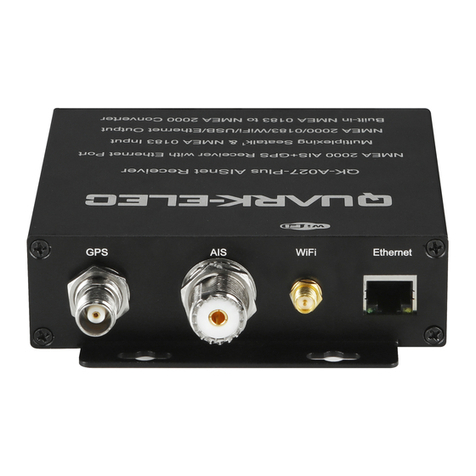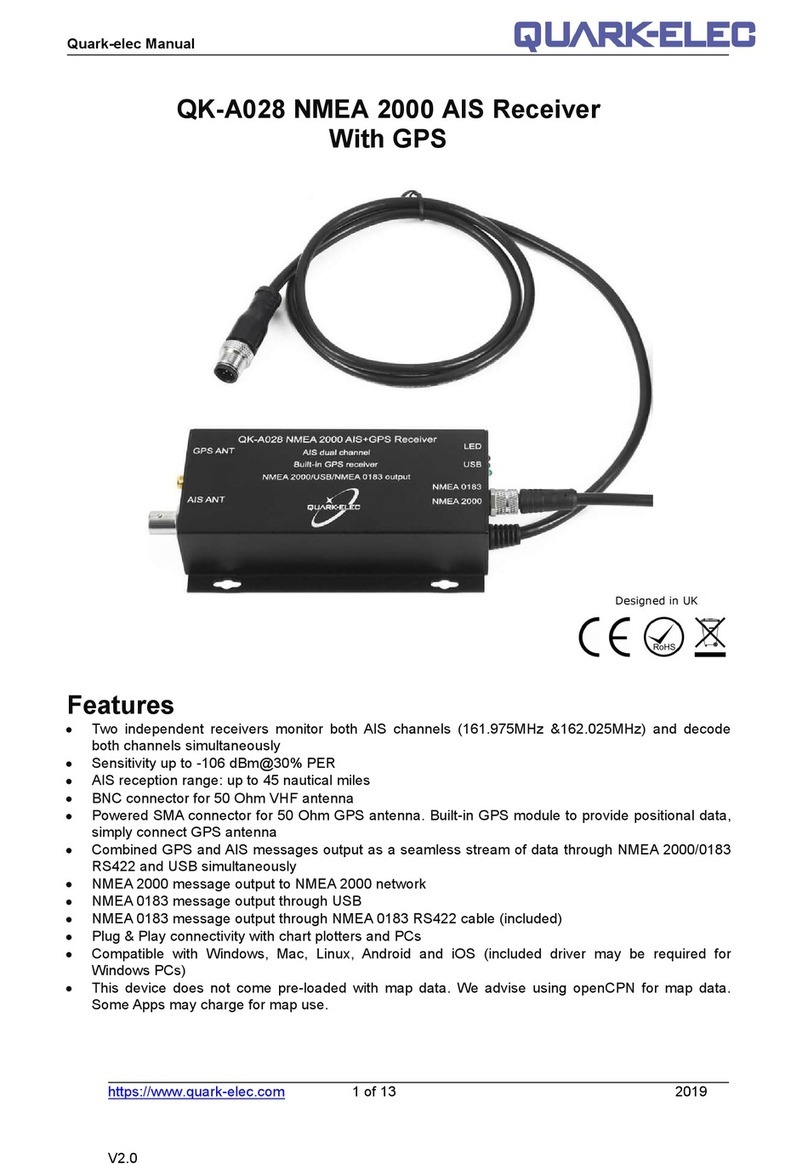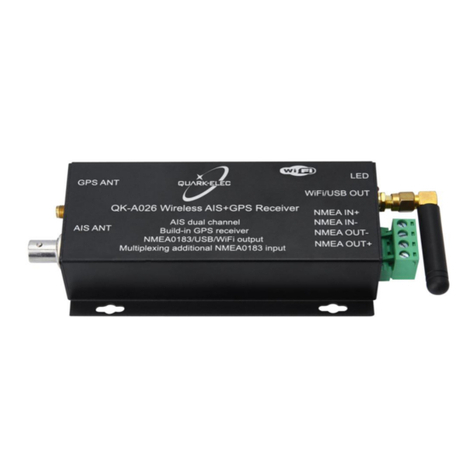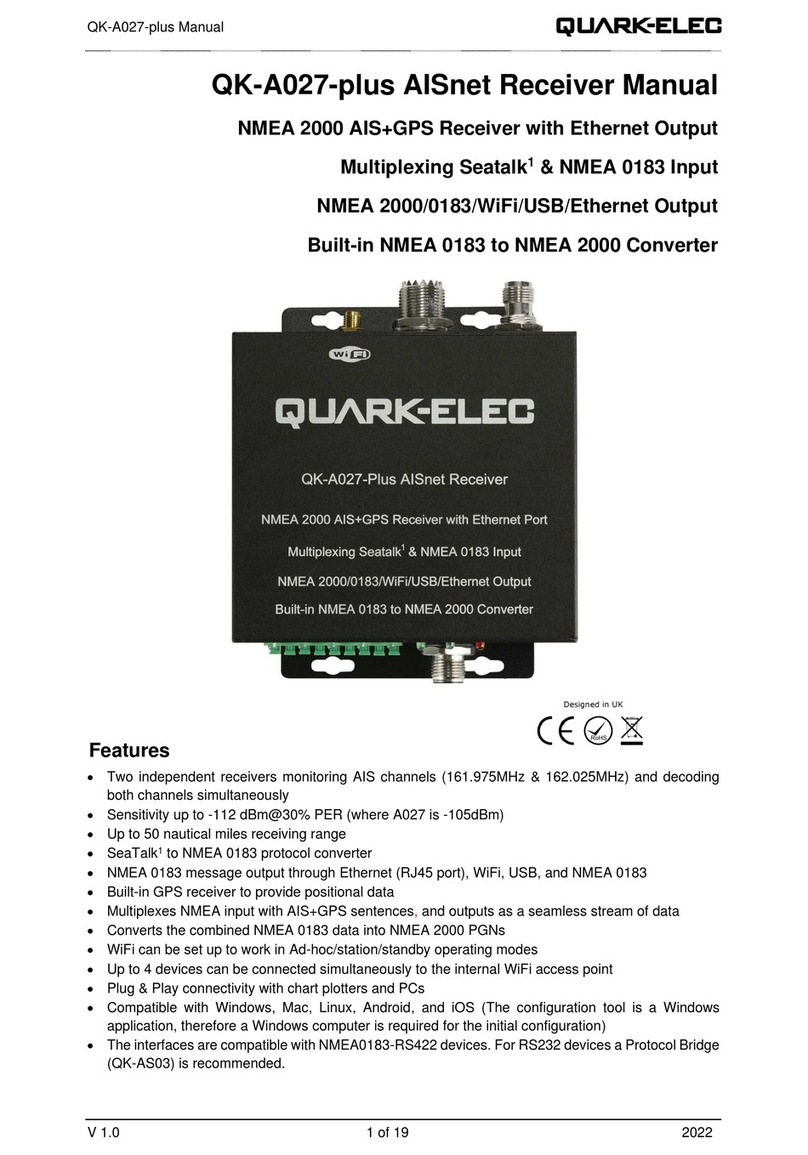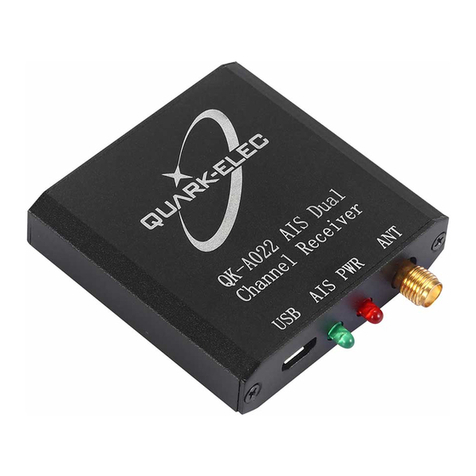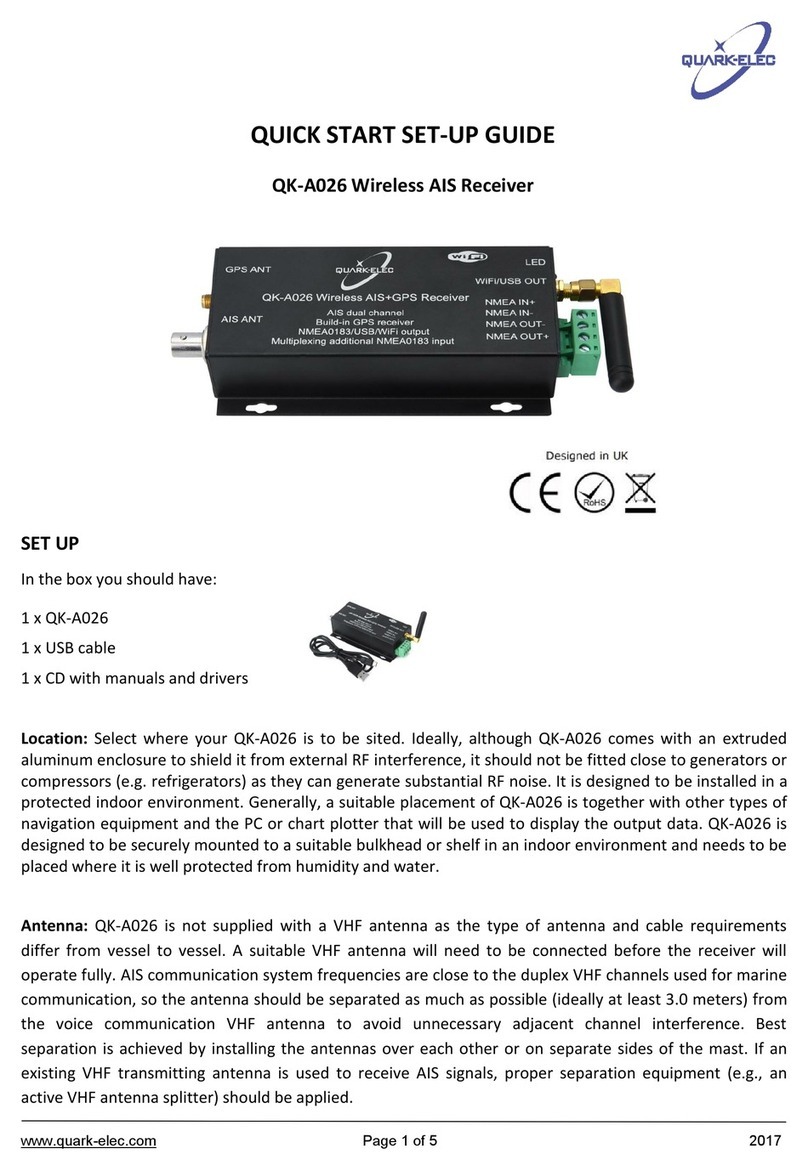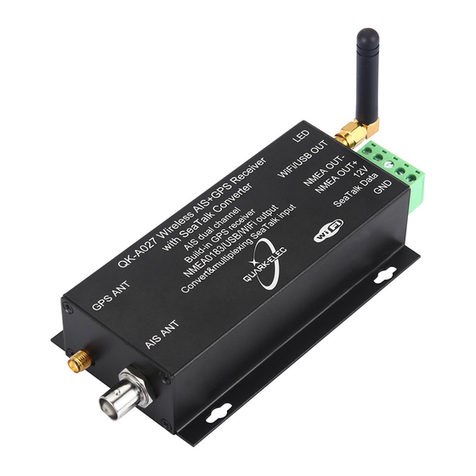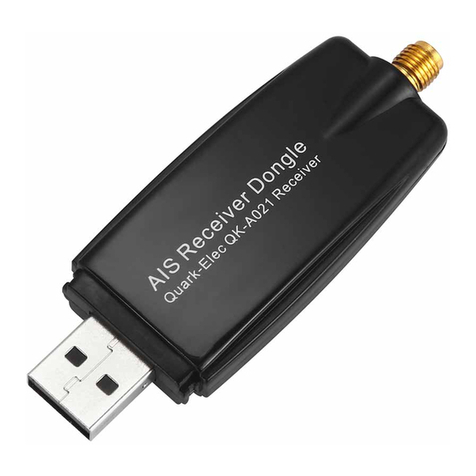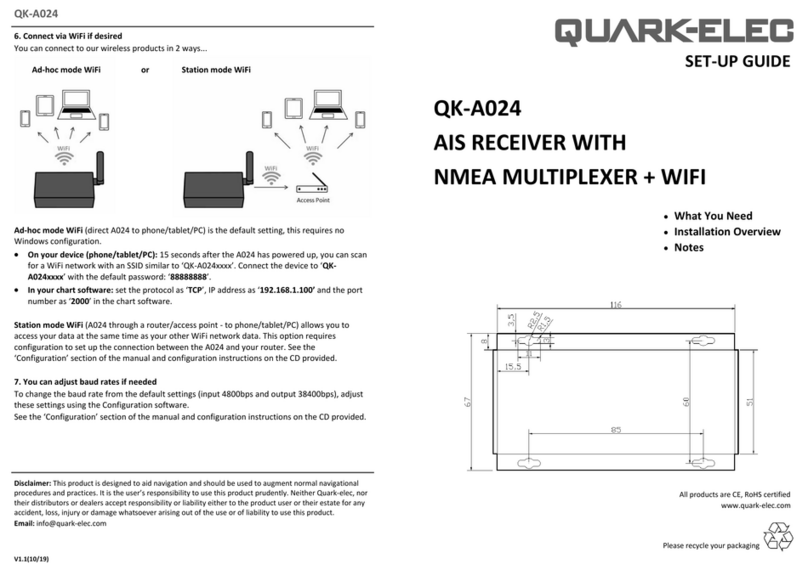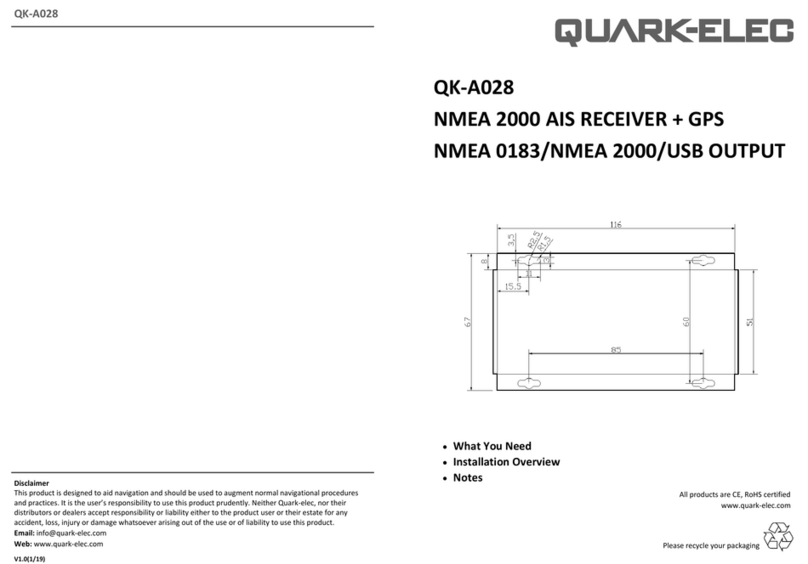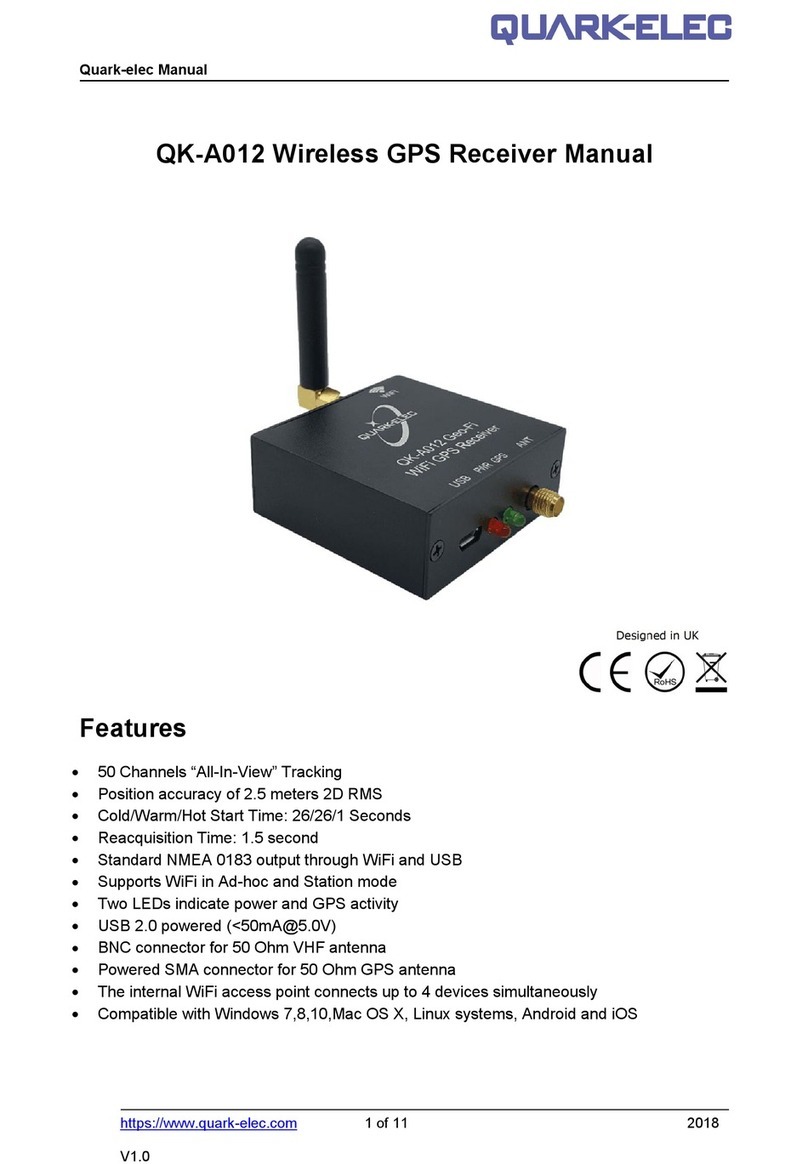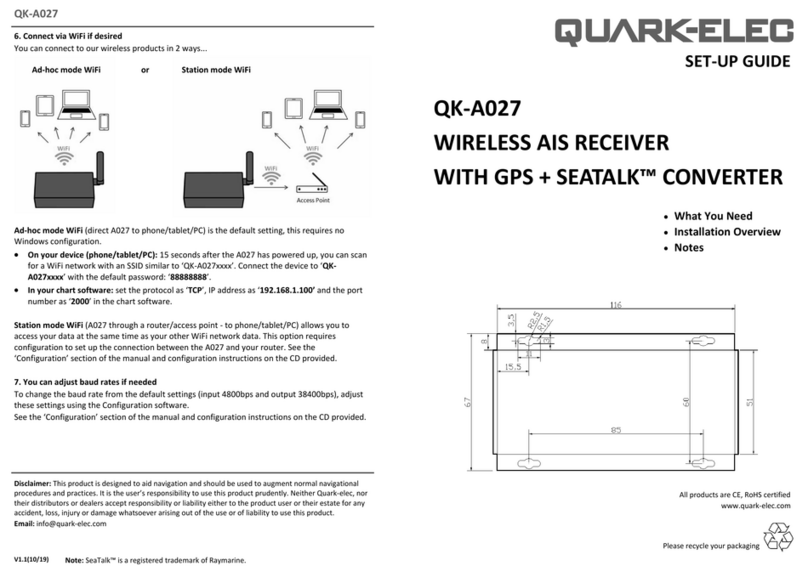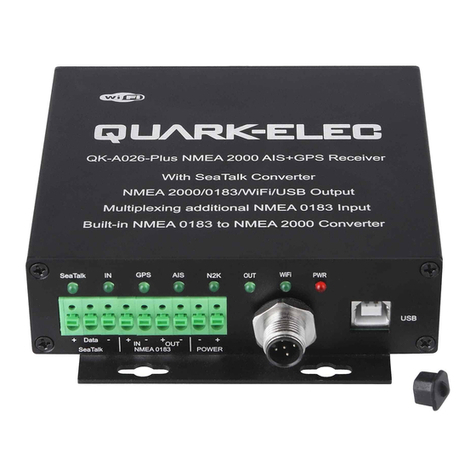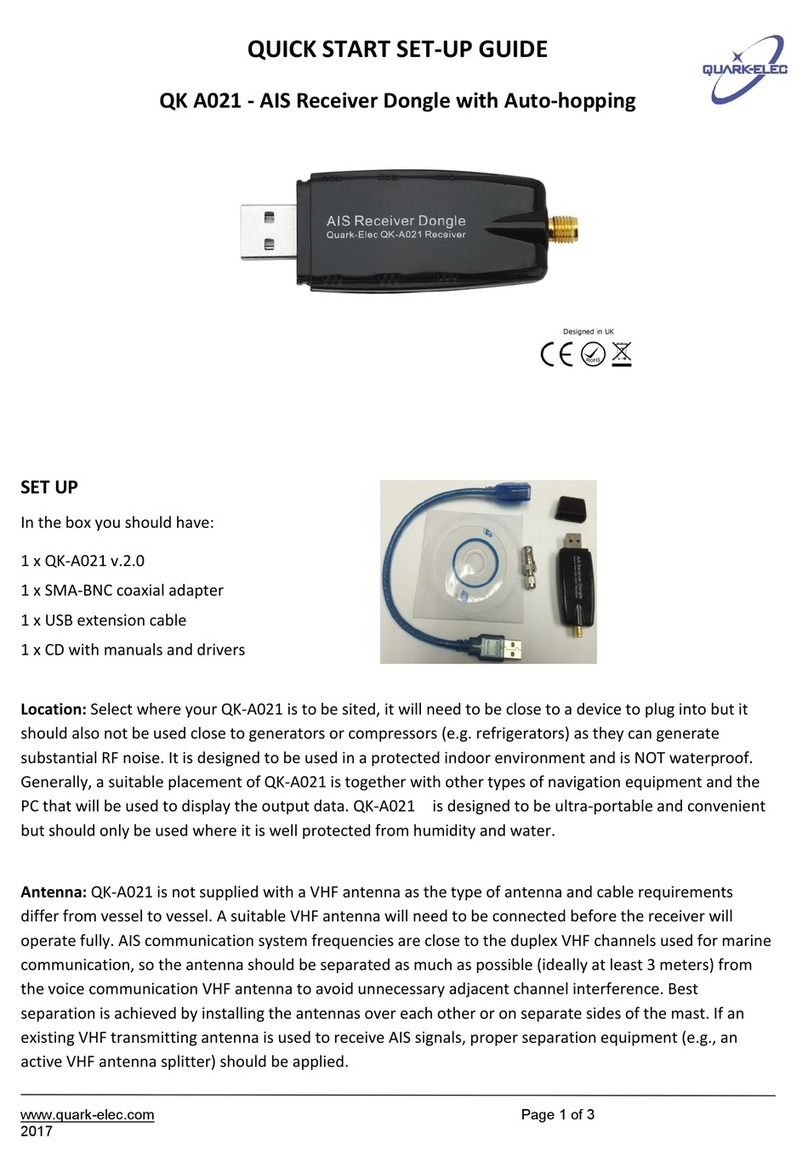
Quark-Elec Manual
https://www.quark-elec.com 8 of 16 2017
V1.0
3 INSTALLATION &OPERATION
3.1 Mounting
QK-A027 is designed to be securely mounted to a suitable bulkhead or shelf in an indoor environment
and needs to be placed where it is well protected from humidity and water.
QK-A027 is not supplied with a VHF antenna as the type of antenna and cable requirements differ
from vessel to vessel. A suitable VHF antenna will need to be connected before the receiver will
operate fully.
3.2 Power up
QK-A027 runs on 12.0V DC and is powered through the SeaTalk interface, this allows a much
cleaner supply and a concomitant improvement in signal reception.
3.3 USB connection
QK-A027 is supplied with a micro USB connector which the NMEA 0183 data can output through.
This USB connector can be linked directly to a USB port on the PC or other mobile devices via the
supplied cable. When the USB cable is connected, the LEDs will light up, this does not mean the
module is sufficiently powered, functional power must come from the SeaTalk bus or the unit will not
work.
To enable the USB data connection of QK-A027 to other devices, related hardware drivers may be
needed dependent on system requirements.
For Windows 8, 7, Vista and XP, the driver can be found on the CD in the packing box or can be
downloaded from the Quark-elec website at:
https://www.quark-elec.com/product/qk-a027-wireless-ais-gps-receiver-with-seatalk-converter/
QK-A027registers itself to the computer as a virtual serial port.
No drivers are required on Windows 10.A new COM port will automatically show up in the device
manager after plug in.
For Mac OS X, QK-A027 will be recognized and shown as a USB modem. The ID can be checked
with the following steps:
--- After plugging QK-A027 into a USB port, launch Terminal.app.
--- Type ls /dev/*usb*
--- Mac system will return a list of USB devices. QK-A027 will display as - “/dev/tty.usbmodemXYZ”
where XYZ is a number. Nothing further needs to be done if it is listed.
No driver is required for Linux. When plugged into the computer, QK-A027 will show up as a USB
CDC device on /dev/ttyACM0.
